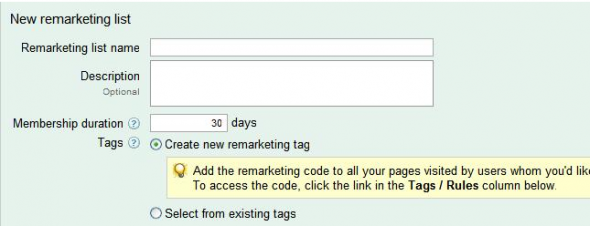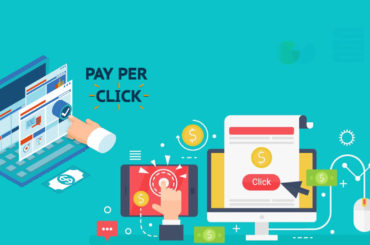Remarketing refers to the advertising/marketing strategy, where you try to convert a potential customer who visited your site from an Ad, but didn’t complete your goal. In other words, you entice users those users to come back and convert, who visited your website but didn’t make a purchase earlier. With Google AdWords you can segment, define and target these audiences. AdWords professionals also use remarketing for product upsells, branding and social engagement. Basically, you can now reach consumers who:
- Abandoned their shopping cart
- Did not convert
- Signed up for an email newsletter
- Signed up for upcoming products information
- Made the sale, as in converted
Beginning with AdWords Remarketing
Identifying Target Groups:
The target groups when it comes to remarketing are created on simple basis- audience who you need to retarget, and the section of audience you don’t want to retarget. This means you need to set the pages that will be triggers to retarget users and on which pages the retargeting will be hidden. With Google AdWords, you can achieve this with custom combinations. Let us segregate audiences on their behavior pattern and custom combinations.
Target Group A-
This may include visitors who landed on a key page following an ad and then viewed product details. They added the item to their carts but did not make the purchase. Now using custom combination, your target audience is the one which stopped one step part of the purchase, as in “add to cart” users. The visitors who made the purchase, as in “bought the products” are excluded from your remarketing efforts. So your aim is to get the “add to cart” users back to your site with a further discount offer.
Target Group B-
This group includes visitors who signed up to information letters about upcoming products. So your ads need to target this group. Custom combination works here too. You can include the people who stopped at “add to cart” in this audience group too. However, those who “made a purchase” are excluded from here.
Target Group C-
This group includes people who submitted your contact form. This means they landed on your ‘Thank You’ page too. When you create a target group for this audience, its custom combination includes “viewed contact form” audience and the visitors who landed on your ‘Thank You’ page are excluded from the group.
Once you are clear with audience identification and combinations, you must use your analytics sales funnel to find key points to retarget users. Keep URLs finalized for tagging visitors and retargeting them, as well as pages that deactivate the targeting. It is advised to have a spreadsheet showing your audience and custom combination you have created and also the unique names you have given to the pages.
Creating Remarketing Lists
Remarketing lists refer to way you define your audience. To create remarketing lists, you need to get to the Audience tab within AdWords. Then select your retargeting campaign and the first ad group to begin with. Another way of doing it on the AdWords Interface is to go to Campaign View and then click on Shared Library and Audiences from the fly out on the left side. Choose ‘New Audience’ button and click on ‘Remarketing List.’ For every audience group defined by you, create a remarketing list and add a descriptive title to each list.
While filling in the details in ‘Membership duration’ you must enter a time duration based on how long you want the cookie to be active once the user is tagged. Decide the duration on the buying cycle length of your products as well as refraining from becoming an irritant for your audience.
The next concern are- Tags, the codes that have to be placed on your site. Choose ‘Create new remarketing tag” each time for a list (barring on the case of delayed remarketing). You must create a tag for each audience. To access the code, you need to click the list name under the “Tags/Rules” column.
Then you must place the codes on the particular pages as chosen by you for each tag. While doing this, be careful so that it is placed between the body tags. Also ensure that the code does not replace ant other AdWords/Analytics code on your site. Always remember to verify that the correct code was placed on each page. Doing this is important is you do not want to fall into the pitfalls of poor ad targeting.
Create Custom Combinations
Custom Combinations tool uses Boolean logic to filter out those who are not remarketing targets or filter the layers that you want to create. This is a great tool to retarget smartly and save your advertising money. Once you have the remarketing lists ready, you need to create these custom combinations.
Go to Remarekting Tabà Click on the first ad groupà Audiences tab (again)à Click “custom combinations”àClick on the link “new custom combination.”à Choose the link to create your combination of audiences. Enter the name and description of the custom combination and leave “all of these audiences” selected in the first drop down menu.
Then click on “Select audiences”à“Interest category”à“Remarketing lists.” Here you must add the remarketing list tagging the users. àClick on “add another” link and when you do this, remember to change the first drop down to “none of these audiences.” This step is to remove the cookie that was placed by the tag from the previously included remarketing list.
Creating Remarketing Ads
Now is the time to upload text ads and banner ads based on the goal of every target group. While writing these keep in mind that these are people who have ‘already’ seen your site. So you have to compose a different message this time, that was not used in your ad campaigns. Here are some ideas about writing them:
- For those who “abandoned cart”- offer free shipping or further discounts.
- For those who “made a purchase”- offer buyer benefits and a complementary product. Or to subscribe for new product information.
- For those who “visited your page”- tell them why you are ahead of your competition.
- For those who “viewed your product”- use images of the product in the ad.
Writing remarketing ads need to be really special and different from regular writing as you are retargeting a group who visited your site and did not perform the desired operation. You need to make sure they come back and do it. If they did make a purchase, your ad has to be in a way that it makes sure that the buyer keeps coming back.
Remarketing Landing Pages
Landing pages need to be changed too, if you are offering:
- Additional discounts
- Free Shipping
Also if you have changed the content of the ad drastically, then too, the landing page needs to change and become customized. With custom landing pages, you will have to give details on free shipping or a list of similar products for those who made the purchase.
If the above special cases are not there, you can direct users back to regular landing pages too.
Capping the Frequency of Ads
You need to then determine the number of times your ads are displayed to individual user in a 24-hour period. The standard accepted rate is between 7 to 12 impressions every day. However, you must experiment and determine which capping works better for you. Make frequency changes and compare data till you know what’s best for your remarketing campaign. Do not choose ‘no cap on frequency’ as too many impressions can irritate your users.
Optimizing the Remarketing Campaign
Test! Test! And Test again. To optimize your campaign best, you must test various ads and landing pages as well as different custom combinations. Keep trying till you reach the combination best for you to achieve your ROI goals. To accelerate the performance of certain combinations, you can increase the bid for that ad group so that you can generate additional sales at a profitable level. Keep an eye on the sites too that work for you and take decisions accordingly.
Advanced Tagging Techniques
Advanced targeting techniques can be really beneficial for a large website, and you can take it up once you have pioneered ‘creating remarketing lists’. For more advanced situations, you can choose delayed targeting by manipulating the duration settings of tags. You can opt for delayed targeting if :
- You sell time bound/seasonal products- Target users who bought Christmas Cards from you last year!
- You sell products that need regular replacement- Target users who bought a car from you and now need servicing.
- You sell related products- Target users that bought maternity clothes, with baby stuff a few months later.
Delayed targeting requires to remarketing lists with the same tag. But for the later stage tag, choose the option “Select from existing tags” while creating the remarketing page.
On A Closing Note
You can remarket better with defining custom audiences; only after you have mastered the basics and tested remarketing ads. Remember that remarketing is powerful strategy as you are enticing someone with an ad who has already taken the bait once. So the chances of conversion are far greater.








